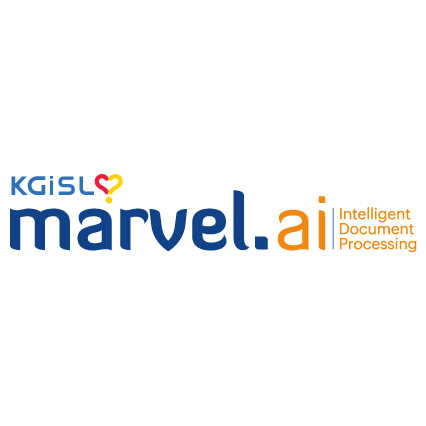Yes, most deep learning applications can be accessed from numerous devices and platforms. This is made feasible by compatibility with multiple operating systems, including Windows, MacOS, and Linux. Many deep learning software also offer web-based or mobile applications, which users can access from any device with an internet connection. This provides flexibility and simplicity in employing deep learning software for a variety of projects and jobs.
List of Best Deep Learning Software
AiWhiz-AutoML, the MLaaS platform designed to simplify AI model creation for organizations. With its cloud-based operation and No-Code approach, this SaaS platform allows for easy construction of AI models without the need for extensive data science...Read More AiWhiz-AutoML
Otter is a transcription software that revolutionizes the way live conversations are captured and transcribed. Perfectly suited for meetings, lectures, and interviews, Otter boasts unmatched accuracy and searchability, improving efficiency and saving...Read More Otter
TensorFlow is an open-source platform that simplifies the creation and deployment of machine learning models in various environments. Its user-friendly APIs, pre-trained models, and support for mobile, edge, and browser-based applications make it a p...Read More TensorFlow
Deep Vision AI - an advanced Artificial Intelligence software perfect for Enterprises and Startups. With a platform for Windows, it offers top-tier features including Deep Learning, AI-Powered Detection, Automated & Real-Time Detection, and Machine L...Read More Deep Vision AI
Ascendance, a revolutionary learning tool powered by advanced artificial intelligence. Elevate your learning experience with our personalized lessons, engaging gamification elements, and detailed progress tracking. Our platform offers a diverse selec...Read More Ascendance
Express Scribe is a medical transcription software that streamlines data sharing and enables seamless collaboration with word editors. It supports analog and digital portable voice recorders, making audio playback for different file formats effortles...Read More Express Scribe
DEEP.assist is an AI-powered platform designed to transform customer service for businesses. By automating tasks and enhancing customer interactions across multiple channels, our solution streamlines service processes and ensures swift implementation...Read More DEEP.assist
DataRobot is revolutionizing the AI industry with its comprehensive platform that simplifies deployment, reduces costs, and enhances scalability. Trusted by leading companies, it empowers teams to drive innovation and achieve significant business out...Read More DataRobot
Concentric Market solution for businesses seeking to enhance their market growth. Packed with innovative tools, this platform empowers established companies to efficiently strategize and optimize their marketing endeavors. From valuable industry insi...Read More Concentric Market
Neural Designer is a machine learning platform designed to aid businesses in gaining valuable insights from their data and optimizing decision making processes. With its intuitive interface, this software combines data visualization, predictive analy...Read More Neural Designer
Deep Learning Studio - a AI-powered platform designed for efficient data entry and document processing. Through its customizable features and outstanding accuracy, this software is ideal for businesses seeking to automate complex data extraction proc...Read More Deep Learning Studio
Tutor LMS is a WordPress plugin, offers a comprehensive points and rewards program for students and instructors. Keeping them engaged and driven towards their learning objectives, this feature enables rewarding actions and milestones, encouraging act...Read More Points and Rewards for Tutor LMS
MARVEL.ai - a document processing software that utilizes AI technology to efficiently extract data and provide actionable insights from complicated documents and images. Our AI-driven framework simplifies the process and delivers precise results, rev...Read More MARVEL.ai
Wolfram Mathematica is all-encompassing software designed for the Internet of Things. It offers a wide array of technical computing capabilities, including advanced features like visualization, machine learning, data science, and image processing. Wi...Read More Wolfram Mathematica
Keras is a widely used deep learning API that caters to the needs of both researchers and developers. Its user-friendly interface simplifies the process of building and deploying models, making it a valuable asset for creating efficient machine learn...Read More Keras
Brighter AI is an innovative video anonymization tool that harnesses the power of generative artificial intelligence to protect identities in public video recordings. It ensures compliance with data privacy regulations, enabling safe and creative uti...Read More Brighter AI
MIPAR is a image analysis software designed to drastically enhance speed and precision in feature detection and measurement. Ideal for various industries, MIPAR offers seamless automation and thorough training for consistent and accurate results. Exp...Read More MIPAR
Clarifai Organization, the forefront of AI integration. Our software offers a user-friendly platform for quick prototyping and seamless scaling of production. With our efficient data labeling system, content moderation is optimized, and security is p...Read More Clarifai Organization
Cognex ViDi Suite - a software that harnesses the power of artificial intelligence to revolutionize machine vision capabilities. This advanced tool delivers unparalleled precision, streamlining inspection, classification, and defect identification ta...Read More Cognex ViDi Suite
H2O is a AI platform that seamlessly integrates predictive and generative AI for a wide range of industries. Our customizable solutions empower companies to fully harness their data and effortlessly implement advanced AI technology. Enhance productiv...Read More H2O
Learn More About Deep Learning Software
- What Is Deep Learning Software?
- What Are The Recent Trends In Deep Learning Software?
- Benefits Of Using Deep Learning Software
- Important Factors To Consider While Purchasing Deep Learning Software?
- What Are The Key Features To Look For In Deep Learning Software?
- Why Do Businesses Need Deep Learning Software?
- How Much Time Is Required To Implement Deep Learning Software?
- What Is The Level Of Customization Available In Deep Learning Software?
- Which Industries Can Benefit The Most From Deep Learning Software?
- Conclusion
What Is Deep Learning Software?
Deep Learning Software (DLS) is a type of artificial intelligence (AI) software that employs algorithms and neural networks to learn and predict from massive datasets. Unlike traditional machine learning approaches, which require people to manually choose and engineer characteristics, deep learning software can automatically extract and process features from raw data, making it a more efficient and accurate choice.
One of the most significant advantages of deep learning software is its capacity to handle unstructured and complicated data, such as photos, audio, and text, which standard machine learning approaches struggle to understand. This makes it ideal for tasks like natural language processing, image identification, and speech recognition. Deep learning software is powered by neural networks, which are interconnected nodes that imitate the structure and function of the human brain.
These networks have numerous layers and use data patterns to solve issues and anticipate outcomes. When shopping for deep learning software, numerous variables should be considered. The first is the software's capabilities, since some may specialize in specific jobs or have more complex features like automatic hyperparameter tuning.
Additionally, interoperability with your preferred programming language and framework is critical to ensuring easy integration into your existing workflow. It is also necessary to assess the software's usability and interface, as well as its performance and accuracy. Reading reviews and comparing different solutions might help you choose the best deep learning software for your individual requirements.
TensorFlow, Keras, PyTorch, and Caffe are some of the most popular deep learning software solutions available today. It is critical to carefully evaluate the features and capabilities of each software to choose which one best meets your needs and budget.
Investing in dependable and efficient deep learning software will assist improve your AI capabilities and allow you to take on challenging and large-scale projects. Deep learning software, with its ability to learn from data and improve over time, is opening the way for ground-breaking advances in artificial intelligence technology.
What Are The Recent Trends In Deep Learning Software?
Deep learning software has gained popularity in recent years due to its extraordinary ability to process and analyze large volumes of data, making it a highly sought-after tool in a variety of industries. As technology advances, new trends and developments appear in the realm of deep learning software. In this buyer's guide, we'll look at some of the latest trends in deep learning software and how they might help prospective purchasers.
1. Increased Use Of Transfer Learning: Transfer learning is a technique that includes fine-tuning a previously trained model to meet a new task. It has become a common strategy in deep learning software because it enables faster training and greater performance with less data. This trend is predicted to continue as developers explore for ways to reduce model training time while improving accuracy.
2. Integration With Cloud Computing: Because deep learning demands massive processing capacity, cloud computing has become a popular option for many enterprises. Deep learning software suppliers increasingly provide cloud-based solutions, allowing businesses to acquire and deploy deep learning models without investing in expensive hardware. This trend is projected to increase acceptance among small and medium-sized organizations.
3. Advancements In Natural Language Processing (NLP): Deep learning software has helped to considerably improve NLP in recent years. This has resulted in the creation of more advanced chatbots and virtual assistants that can understand and respond to human language like never before. As more NLP applications are investigated, this tendency is expected to continue in the future years.
4. Emphasis On Explainable AI: As deep learning models become more complicated, there is a growing demand for explainable AI, which allows users to see how the model makes decisions. This is especially important in fields like healthcare and finance, where AI judgments must be explained. As a result, deep learning software providers are adding explainability features to their solutions.
5. Use Of Generative Adversarial Networks (GANs): GANs are a sort of deep learning model that may produce data that appears and feels real. This has opened up new opportunities for applications like as picture and video generation, content development, and data augmentation. The use of GANs is likely to increase, particularly in fashion, gaming, and advertising. Finally, the field of deep learning software is always evolving, and these themes will help shape the technology's future.
Benefits Of Using Deep Learning Software
Deep learning software has transformed how businesses and organizations handle challenging problems, and the advantages are truly game-changing. This buyer's guide will go over the main benefits of utilizing deep learning software, providing you a thorough grasp of how this powerful technology may improve your productivity and efficiency.
1. Improved Accuracy And Performance: One of the most significant advantages of employing deep learning software is its unparalleled accuracy and performance. Deep learning software uses powerful algorithms and neural networks to process large volumes of data and produce very accurate predictions. This reduces the need for human interaction, lowering the risk of errors and enhancing overall efficiency.
2. Faster Processing Speed: Deep learning software allows you to process large volumes of data in a fraction of the time it would take a human. This speed is especially useful for jobs like picture or speech recognition, where deep learning algorithms can process and classify data in milliseconds. This not only saves time, but also allows for real-time decision-making, making it an invaluable tool in time-sensitive businesses.
3. Scalability: Deep learning software is extremely scalable, making it suitable for corporations and organizations of all sizes. Whether you run a small business or a large corporation, you can quickly scale up or down your deep learning software to suit changing demands. This means you can harness the potential of deep learning without investing in expensive hardware or infrastructure.
4. Automated Feature Extraction: One of the most important advantages of deep learning software is its ability to automatically extract features from difficult data. This means that the program can recognize patterns and features without requiring human intervention, resulting in more accurate and efficient data processing. This is especially handy for dealing with unstructured data like photographs or text.
5. Personalized Solutions: Deep learning software can be taught using your specific data and tailored to your individual requirements. This means that the software may learn your business processes and provide bespoke solutions tailored to your industry and operations. This level of customization ensures that your deep learning software performs optimally for your specific business requirements.
6. Cost-Effective: Deep learning software is more cost-effective than typical machine learning approaches since it can automate operations that would otherwise take a lot of time and effort. This not only saves money, but also frees up your team's time to focus on other important activities. Furthermore, deep learning software can handle larger and more complicated datasets, allowing for more cost-effective data processing.
Important Factors To Consider While Purchasing Deep Learning Software?
When it comes to acquiring deep learning software, there are a few key elements to consider before making a purchase. These criteria influence not only the software's performance, but also the overall success of your deep learning initiatives. In this buyer's guide, we will discuss the most important variables to consider when selecting deep learning software.
1. Compatibility: Before making a purchase, ensure that the product is compatible with your current infrastructure and tools. This covers the operating system, programming language, and any other libraries or frameworks you may be utilizing. Choosing software that is incompatible with your system can cause compatibility issues and disrupt your workflow.
2. Features And functionality: Deep learning software has a variety of features and functionalities, and it is vital to determine which ones are required for your projects. Some software may include complex functionality that you do not require, while others may lack functionalities that are essential to your job. As a result, it is critical to examine your requirements and select software that includes the necessary characteristics.
3. User Interface And usability: The software's user interface can have a significant impact on your overall experience and productivity. A cluttered and confusing interface might make it difficult to browse and utilize the software, resulting in lower productivity. On the other hand, a user-friendly design with simple controls might improve your workflow and save you time.
4. Performance And Speed: Deep learning requires the processing of enormous volumes of data, and software performance can have a significant impact on the speed and accuracy of the findings. To guarantee that the program can properly manage your data processing demands, you should analyze its speed and performance benchmarks.
5. Scalability: As your deep learning projects progress, you may want software that can handle larger datasets and more complicated models. As a result, it is critical to choose software that is scalable and can meet your future requirements.
6. Support And Documentation: The degree of support and documentation supplied by the software firm can be critical if you run into any problems or require assistance understanding specific features. Before making a purchase, verify the support options and availability of documentation, such as tutorials and user guides.
7. Cost: Deep learning software pricing might vary widely, so you should evaluate your budget as well as the software's pricing model. Some may provide one-time purchases, while others may require monthly or annual memberships. To get the best value for your money, evaluate the features and costs of several software packages. Keeping these aspects in mind when selecting deep learning software will allow you to make an informed selection and select software that fulfills your needs and improves your deep learning projects.
What Are The Key Features To Look For In Deep Learning Software?
Deep learning software is a powerful tool that uses artificial intelligence algorithms to analyze and comprehend enormous amounts of data. It has transformed a variety of industries, including healthcare, finance, and entertainment, by allowing the development of complex, intelligent systems. When contemplating purchasing deep learning software, it is critical to thoroughly assess its capabilities to verify that it fulfills your specific requirements and goals. Here are some important aspects to bear in mind:
1. Data Compatibility: The software should be able to handle a variety of data types, such as text, photos, videos, and audio. This is important because it enables for a more thorough study and interpretation of various sorts of data.
2. Customization Options: Look for software that allows you to tailor the models and algorithms to your individual company requirements. This flexibility ensures that the program is matched to your specific data and goals.
3. Scalability: As your company expands and generates more data, the software must be able to scale and manage larger datasets without sacrificing performance. This eliminates the need for periodic updates and associated costs.
4. User-Friendly Interface: A user-friendly interface is essential, especially for people who are new to deep learning technology. It should have simple tools and a well-designed interface to make the learning process easier.
5. Algorithm Library: Ensure that the program includes a large library of pre-built algorithms, as they can save time and effort when constructing complex models. Furthermore, the library should be periodically updated to contain the most recent algorithms.
6. Performance And Speed: Deep learning software necessitates a significant amount of computational capacity to process massive datasets and create complicated models. Consider software that provides great performance and quickness, whether through GPU technology or parallel computing.
7. Technical Help: Select a software vendor that provides dependable technical support to address any technical issues or questions you may have. This can be accomplished via tutorials, webinars, or a dedicated support team. Consider these critical qualities to guarantee that the deep learning software you choose is efficient, effective, and fulfills your specific requirements. Take the time to investigate and compare several possibilities to determine the greatest fit for your company.
Why Do Businesses Need Deep Learning Software?
Deep learning software is becoming increasingly important for enterprises in today's fast-changing technological landscape. This sophisticated technology uses artificial neural networks to evaluate large volumes of data, discover patterns, and make predictions or judgments without explicit instructions. Simply said, it mimics how the human brain processes information, allowing it to handle difficult tasks and produce correct results.
One of the key reasons why organizations use deep learning software is to obtain a competitive edge. With the ability to process and analyze data quickly, this software can reveal key insights and trends that might otherwise go overlooked. These insights can help firms make better, more informed decisions, providing them a competitive advantage in their field.
Furthermore, deep learning software can automate and optimize several processes, saving firms time, effort, and money. For example, it can automate data entry and analysis, allowing personnel to focus on other critical duties. It can also boost the accuracy of predictive models and decision-making, resulting in better corporate outcomes. Another benefit of adopting deep learning software is its flexibility.
It can be used in a variety of industries and applications, including healthcare, banking, retail, and manufacturing. This adaptability makes it an invaluable tool for enterprises of various sizes and sectors. In addition, deep learning software allows firms to personalize their products or services. Businesses that analyze consumer data can obtain a better understanding of their target audience and provide personalized experiences, resulting in improved customer satisfaction and loyalty.
Furthermore, since data breaches and cyber threats have increased, deep learning software has become critical for firms seeking to improve their cybersecurity procedures. This powerful technology may detect and flag suspicious actions or anomalies in real time, warning firms about potential security threats.
How Much Time Is Required To Implement Deep Learning Software?
The time required to deploy deep learning software varies based on several aspects, including the project's complexity, the size of the data collection, and the user's skill level. Deep learning software implementation often consists of many processes, including data pretreatment, model training, and integration into an existing system.
Data preprocessing is an important stage in deep learning since it cleans, formats, and organizes data for optimal use in the model. This stage might take anything from a few hours to many days, depending on the amount and quality of data. The next phase is model training, which entails putting the preprocessed data into the deep learning algorithm and optimizing the model's parameters.
This process can take anything from a few hours to many weeks, depending on the model's complexity and available processing capacity. Once trained, the model must be integrated into the existing system for practical application. This stage can take a few days or weeks, depending on the complexity of the integration and the user's experience with the product.
In general, the process of implementing deep learning software can take from weeks to months. However, employing pre-trained models and cloud computing resources can drastically minimize this time.
It is crucial to note that the time necessary to integrate deep learning software may vary depending on the level of customization and fine-tuning needed for the given project. As a result, it is critical to have a thorough understanding of the project requirements and set aside enough time for the implementation process.
What Is The Level Of Customization Available In Deep Learning Software?
Deep learning software provides extensive customization options, allowing customers to build their models and algorithms to their individual requirements. The level of customisation possible in deep learning software varies according to the type of program and its characteristics. Programming languages are a frequent method for customizing deep learning technologies.
Many deep learning platforms, including TensorFlow, PyTorch, and Keras, support common programming languages like Python, allowing users to write their own code and customize their models. This level of customisation is excellent for sophisticated users or researchers with specific requirements and desire greater control over their models.
Furthermore, some deep learning software provides drag-and-drop interfaces, allowing users to create custom deep learning architectures without the need for programming.These platforms frequently feature a library of pre-built models and algorithms from which users can select and edit with ease, making them an excellent choice for beginners or those seeking an easier modification process. Another facet of customisation in deep learning software is the option to select among a number of neural network designs.
CNNs, RNNs, and LSTM networks are among the examples. Users can choose the most appropriate architecture for their unique work, increasing the software's effectiveness and efficiency. Furthermore, deep learning software allows you to customize hyperparameters like learning rate, batch size, and activation functions.
These parameters have a substantial impact on the performance of a deep learning model, and the ability to alter them based on specific requirements can increase the model's accuracy.
Which Industries Can Benefit The Most From Deep Learning Software?
Deep learning software is a strong and quickly growing technology that is transforming several industries by allowing computers to learn and make judgments without explicit programming. It uses artificial neural networks to evaluate and interpret complicated data, making it a valuable tool for businesses seeking to increase efficiency, accuracy, and decision-making. Here are some of the industries that will profit the most from deep learning technology.
1. Healthcare: The healthcare industry has access to a tremendous amount of data, including patient information and medical imaging. Deep learning software can help in accurately diagnosing illnesses, predicting future health concerns, and determining the best treatment options. It can also assist to streamline administrative and operational operations, freeing up healthcare providers to focus on providing better care to their patients.
2. Finance: Deep learning algorithms can analyze large volumes of financial data and uncover trends to help investors make better judgments. It can also help financial organizations detect fraudulent activity and predict market trends, allowing them to make more informed decisions and reduce risks.
3. Retail: Deep learning software may help retailers improve the consumer experience by providing personalized recommendations, segmenting customers, and forecasting their behavior. This can result in increased revenue, stronger client loyalty, and better inventory management.
4. Manufacturing: Deep learning software can help optimize manufacturing operations by analyzing data from sensors, machines, and other devices. It can identify possible problems, predict equipment failure, and optimize production schedules, resulting in higher productivity and less downtime.
5. Transportation: Deep learning software can aid the transportation industry in a variety of ways, including demand prediction, route and schedule optimization, and maintenance issue detection. These applications have the potential to enhance transportation efficiency while also lowering costs for corporations and consumers alike.
Conclusion
To summarize, Deep Learning Software provides strong tools and approaches for data scientists, engineers, and researchers to create and implement advanced artificial intelligence systems. This sort of software uses deep neural networks and other algorithms to handle big and complicated datasets, learn from patterns and relationships, and make accurate predictions and judgments.
When purchasing Deep Learning Software, there are various variables to consider. First, identify the unique use cases and goals for your AI projects. This will help you limit down the features and capabilities you require from the software. Consider the ease of use and compatibility with your existing systems and programming languages.
Another critical consideration is the availability of help and resources. Look for software companies that give detailed documentation, online tutorials, and timely customer assistance. This will guarantee a seamless learning and implementation process. Furthermore, pricing and licensing choices should be carefully considered.
Some software may provide a free trial or open-source version, but others may demand a membership or a one-time fee. Consider the most cost-effective solution for your budget and needs. To keep ahead of the curve in the continuously expanding field of artificial intelligence, Deep Learning Software should give continual upgrades and enhancements.
Choose software vendors who have a robust development staff and routinely offer new upgrades and improvements. Overall, the correct Deep Learning Software can significantly improve your organization's ability to analyze data, make decisions, and automate. By carefully examining your goals and taking into account the aforementioned variables, you can make an informed decision and select the finest software for your AI projects.
Deep Learning Software FAQ's
Can Deep Learning Software Be Accessed Across Multiple Devices And Platforms?
Is Deep Learning Software Future-Proof And Adaptable To Emerging Technologies Like Ai, Blockchain or Iot?
Yes, Deep Learning Software is future-proof and adaptable to upcoming technologies such as artificial intelligence, blockchain, and Internet of Things. Deep learning algorithms, which are always evolving and improving, have the ability to easily integrate with new technologies and adapt to changing needs. Furthermore, deep learning software is very adaptable and can be tailored to specific needs, making it an invaluable tool in the ever-changing technology world.
Is There A Free Trial Offered To Assess Deep Learning Software Before Committing?
Yes, many providers of deep learning software provide free trial versions for interested consumers to evaluate before committing. This allows customers to evaluate the software's features, usability, and performance before purchasing or subscribing. Some suppliers additionally give free tutorials or online courses to help consumers learn and operate the program throughout the trial time.
Does Deep Learning Software Offer Data Security Features And Meet Regulatory Compliance Standards?
Yes, most deep learning software has data security safeguards that secure sensitive information. Encryption, access limits, and data monitoring are all possible options. Furthermore, many deep learning software solutions are intended to meet regulatory compliance requirements such as GDPR and HIPAA.
This assures that enterprises that use the software can safely handle and process personal and confidential data while adhering to all applicable privacy rules. It is critical to investigate and select software that particularly addresses your compliance requirements.
Can Deep Learning Software Integrate Seamlessly With Existing Tools And Platforms?
Deep learning software is designed to work smoothly with existing tools and platforms. This is made feasible by the use of multiple APIs, libraries, and frameworks that provide simple integration and compatibility.
Deep learning software can be easily integrated into any current software stack due to its compatibility with common programming languages such as Python, Java, and C++. Furthermore, most deep learning software provides cloud-based solutions, which makes it easier to interface with existing cloud infrastructure and platforms.






















